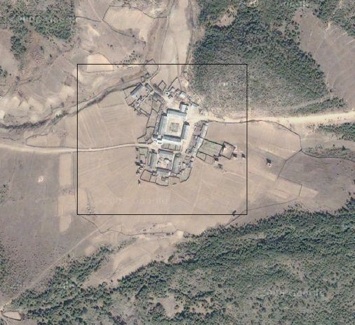
China Week 2006 Project


Ma Chan is a small village established in 1959 when the Chinese government sent leprosy sufferers to this remote location to spend the rest of their lives in isolation from the wider community. There are six ethnic groups in the village, the largest being the Zhang nationality. The population is about 60 people.
None of the people currently has leprosy, although many carry the scars of the disease. The last person to be sent there with leprosy arrived in 2000. No-one has ever contracted leprosy in the village, and all the residents now have certificates enabling them to leave if they wish. However, all prefer to remain rather than suffer the humiliation, stereotyping and prejudice of people outside the village.
Our immediate aim this year was to paint the interiors of many houses for the elderly people who have lost fingers and joints and thus cannot perform manual work themselves. Because of the cold climate, many of the elderly people spend all winter indoors, keeping warm by sitting over a smoky wood-burning stove. As a consequence, the inside walls and ceilings of the houses were coated in a thick layer of accumulated greasy black soot that had to be painstakingly removed before the painting could begin. The state of the walls we cleaned gave a stark insight into the condition of the people’s lungs as they spend so much time breathing the smoke.
A second objective of the visit was to explore the possibility of renovating the abandoned school building, equipping it for basic primary education and providing a teacher through GCAT to educate the children of the village. When we arrived, we received the good news that the children’s needs had already been met by Macau Caritas, which had arranged for the children to be educated at a boarding school in Kunming (the provincial capital).
Nonetheless, significant other needs were identified, especially the need to repair the roofs of the houses, many of which leak, making life in the small houses miserable in cold wet weather. I hope we can obtain some cement and the skills in Chinese roof tiling to address this need in the months and years ahead.
As well as providing support and help to the residents of the lepers’ village, our trip also aimed to trek 25 km through Tiger Leaping Gorge, a spectacular if arduous walk in the upper reaches of the Yangtze River. The founder of the United World Colleges, Kurt Hahn, had emphasised this type of outdoors experience as a way of pushing forward the boundaries of one's own expectations of oneself. As he famously commented, "Your disability is your opportunity - there is more in you than you think!". Some images of our trek through Tiger Leaping Gorge - one of my favourite places in the world - can be seen HERE.
Our final objective was to learn more about the minority Naxi nationality culture that dominates the ancient town of Lijiang. One of the reasons that many students choose to study at Li Po Chun United World College in Hong Kong is to discover more about China's diverse cultures, and Lijiang provides a rich resource of cultural experiences. Unfortunately, several factors conspired to reduce our time in Lijiang, and our time there was limited to just one day. A few images of that time can be seen HERE.
An account of the experiences of the November 2006 trip, as described in my web blog at the time, can be read HERE.






Serving Lepers in South-West China
PHOTO ALBUMS

MY OTHER LINKS

EXTERNAL LINKS

“Cured leprosy victims still shunned in China” (in Reuters AlertNet)
“Ignorance breeds leper colonies in China” (in IOL, South Africa)
“Leprosy in China” (in Wikipedia)
Articles from South China Morning Post on our work in Ma Chan:










